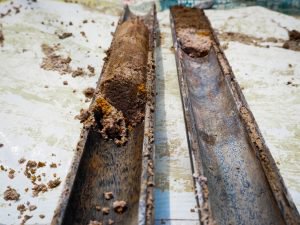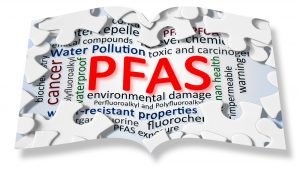
For over 30 years, GBTS has completed a large number of commercial real estate due diligence projects. These have included:
- Identifying potential environmental risks.
- Being a Client Advocate and representing the client with regulatory agencies.
- Monitoring the implementation of remedial action plans.
- Developing remediation completion reports for local agencies review and closure of remedial plan.
Real Estate Due Diligence
In compliance with the ASTM standard, Gallagher Bassett has been providing environmental site assessment as an environmental consulting company for developers (Environmental Counsel) for 20 years.
Phase I Environmental Site Assessment (Environmental Due Diligence)
Classic Phase I Environmental Site Assessments (ESAs) identify potential sources of contamination by evaluating how the property has been used in accordance with ASTM 1527-21 and federal “All Appropriate Inquiries” regulations.
Our hardworking, knowledgeable team of environmental specialists is skilled at performing Phase 1 Environmental Assessments, providing knowledgeable advice, and producing accurate reports. Every completed Phase I ESA report demonstrates our dedication to precision, comprehensiveness, and excellent quality.
In addition to adhering to the latest ASTM Practice Standards’ scope and limitations, GB Technical Services performs Phase I and Phase II Environmental Site Assessments while taking into account the unique requirements of each client.
Phase II Site Investigation
If a Phase I ESA indicates the need for sampling and analysis, or the liabilities dictate further action, a Phase II Site Assessment is necessary. This investigation helps obtain a better understanding of the potential environmental liabilities for the property and the financial impacts of such liabilities.
Our technical experts collect site samples and conduct lab tests to identify any contaminants in the soil, surface, or groundwater.
With years of experience and knowledge, GBTS tailors each Phase II Site Investigation to achieve the best results in the least amount of time and money. We follow relevant field screening and analytical methodologies and create detailed chemical testing and sampling programs in accordance with ASTM Standards.

Assessment/Remediation Services
Because of our industry and regulatory experience, GBTS is able to execute the investigation, oversight, and remediation for any project. Services provided include environmental health & safety consultant expertise, environmental file review, and claims management, as well as cost-effective potential alternatives.
Our team of expertly trained and certified environmental professionals can provide technical analysis to produce report that highlights the key elements of a project and its intended location.
Phase III Site Remediation Oversight
Based on our Phase I and Phase II Environmental Site Assessments, our team can prepare and implement Remedial Action Work Plans (RAWPs) for Phase III remediation. This plan outlines how to remove environmental toxins and remediate a property. Our team also provides oversight services during remediation and submits reports to the appropriate authorities.
Brownfields Development Management

Using a comprehensive, dedicated, service-oriented proactive approach, we review historical hazards associated with historical industrial use and abandoned, contaminated properties. GBTS works with engineers to create an overall project plan, incorporating the results of Phase II Site Assessments and further Phase II Site Investigations to guide remediation strategies.
- In-situ soil and groundwater characterization
- Risk quantification & risk transfer strategies
- Risk assessment, remedial alternatives and feasibility studies
- Corrective and remedial action work plans
- Remediation system design, constructability analysis and procurement specifications including system operation & maintenance requirements
- UST and AST removal / closures & documentation
- Regulatory communication, negotiation, compliance and permitting
- Project and construction management, integrated with new use site work
- Hazardous material investigation
- Continued support for any additional regulations, etc. once the project is complete
PFAS/PFOS/PFOA
 On April 19, 2024, the US Environmental Protection Agency (“USEPA”) announced its final rule designating two per- and polyfluoroalkyl substances (“PFAS”), namely perfluorooctanoic acid (“PFOA”) and perfluorooctanesulfonic acid (“PFOS”), as ‘hazardous substances’ under the Comprehensive Environmental Response, Compensation, and Liability Act (“CERCLA”).
On April 19, 2024, the US Environmental Protection Agency (“USEPA”) announced its final rule designating two per- and polyfluoroalkyl substances (“PFAS”), namely perfluorooctanoic acid (“PFOA”) and perfluorooctanesulfonic acid (“PFOS”), as ‘hazardous substances’ under the Comprehensive Environmental Response, Compensation, and Liability Act (“CERCLA”).
PFAS are composed of strong carbon-fluorine bonds that cause these chemicals to be highly resistant to degradation, remaining in the environment for long periods of time. PFOA and PFOS are two of the most studied, prevalent, and longest-used PFAS. PFAS are a class of manufactured compounds that are extensively used to make everyday items more resistant to stains, grease, and water. They have historically been used in a wide range of industrial processes and consumer products, including carpets, clothing, fabrics for furniture, packaging for food and cookware, and firefighting foam.
One of the most significant impacts of the USEPA ruling is that now Phase I Environmental Site Assessments must include an evaluation for potential PFAS concerns. The USEPA also has proposed strict cleanup standards for specific PFAS compounds, which will go into effect in 2029. Individual states, such as Florida, have enacted enforceable cleanup guidelines and target levels, which eventually will be lowered to comply with the impending USEPA regulations.
Spills
In the event that a chemical or other kind of spill occurs, prompt response is required to minimize potential harm to the environment as well as to prevent harm to employees and others. GBTS integrates services as an environmental consulting company with expertise in environmental site assessment and remediation to provide effective spill response strategies.
Environmental Health and Safety Plans (eHASP/EHS)
The goals of an Environmental Health and Safety (EHS) plan include:
- The well-being and safety of all individuals involved in the organization or project. This includes employees, contractors, visitors, and the surrounding community. Our services include support from an environmental health & safety consultant for detailed risk evaluations.
- The organization’s or project’s compliance with all relevant environmental, health, and safety laws, regulations, and standards, including requirements identified through Phase I and II Environmental Site Assessments.
- Minimizing the organization’s impact on the environment by integrating findings from Phase 1 Environmental Assessments and Phase II Site Assessments into pollution prevention and waste reduction strategies.
- Identifying and assessing potential risks and hazards associated with the organization’s activities through Phase II Site Investigations and other advanced evaluations. These assessments establish measures and procedures to mitigate risks and prevent accidents, injuries, or environmental incidents.
- Including mechanisms for ongoing evaluation, monitoring, and improvement of environmental, health, and safety performance. This involves implementing targets and corrective actions based on the results of environmental site assessments and regulatory guidelines.

